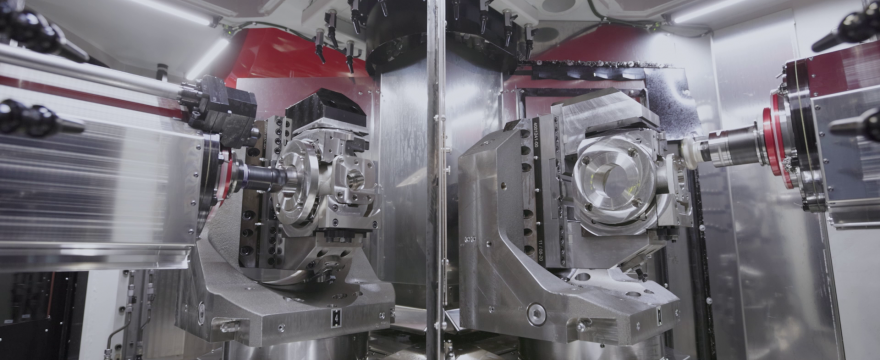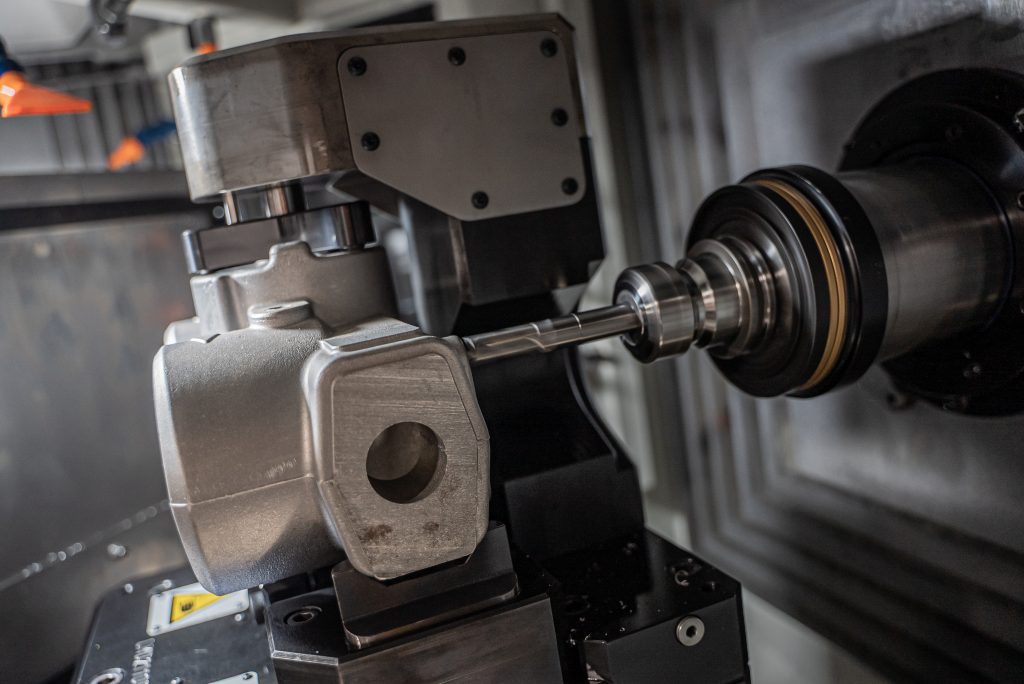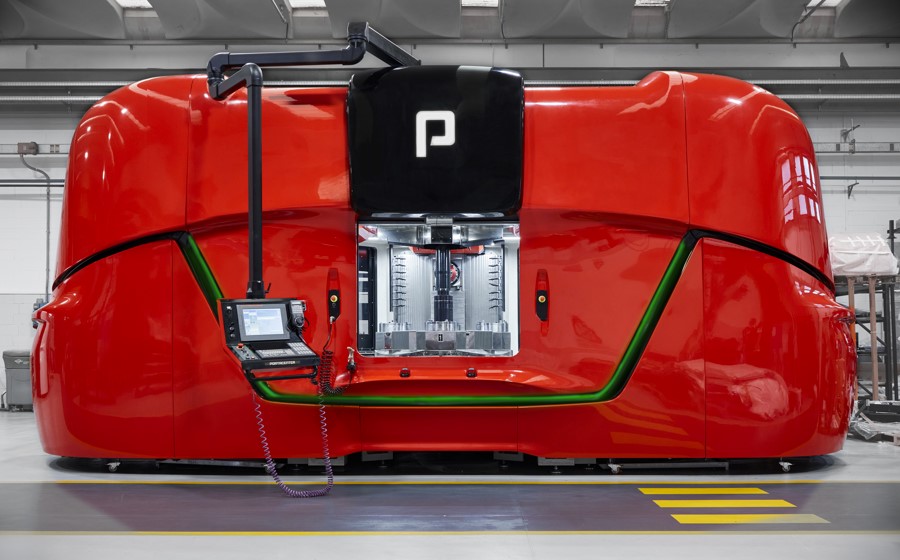The Oil&Gas industry is very complex and the production of valves includes a wide range of sectors, components and materials, so much so that, with my experience, I could write 3 books about that.
But of course I won’t.
On the contrary, for this article I deliberately choose to focus on 2 materials, STEEL and CAST IRON valves.
You are probably thinking about the fact that until now their traditional production process has always been divided into two main stages:
- TURNING
- MILLING/DRILLING
During my long career, in which I have collaborated with a few hundred companies using CNC Machining Centers (Yes, I have a white beard and over 30 years of experience in this sector), I have had the opportunity to visit different production departments.
The first production phase is typically carried out on a horizontal lathe for small valves and on a vertical lathe for larger ones, to then, in the second phase, be handled on a more or less large machining center, according to the valve size.
Therefore, these two phases are typically carried out with two types of machine tools: the lathe and the machining center.
Then I saw other situations, precisely in the Oil&Gas industry, in which to increase productivity, the production process was more or less organized as follows:
- Lathe 1: Turning of first flange
- Lathe 2: Turning of second flange
- Lathe 3: Turning of third flange
- Machining Centers 4, 5, 6: Milling
- Drills 7, 8: Drilling of flange holes
- Drills 9, 10: Tapping of flange threads
- Valve manual deburring department
In my opinion this business model is difficult to scale and not very efficient at all…
But now let’s get to the heart of the matter…
WOULD YOU LIKE TO HAVE A SINGLE CNC MACHINING CENTER TO MACHINE YOUR VALVE, SO IT COMES OUT 100% FINISHED WITH JUST ONE PROCESS?
It would be nice, wouldn’t it?
Because the real problem is that a production model with many Machining Centers in battery, where each of them performs a single phase, has too many variables to manage.
And too many variables to manage give rise to lots of problems.
Do you want to know what happens with Machining Centers in battery?
HERE ARE 8 CRITICAL POINTS YOU HAVE IN PRODUCTION WHEN MACHINING A PART WITH MULTIPLE MACHINING CENTERS AND PROCESSES:
- Quality problems, as you have to REPOSITION the part on the various machines several times.
- HIGH personnel costs, because you will have to employ several people on the production line.
- Greater incidence of human variable, which means high probability of ” production inconstancy”.
- Many people = many management problems over 3 shifts.
- More occupied area than actually needed.
- High part handling, leading to a greater likelihood of creating defects on parts and costs associated with poor process optimization. Too many movements = too much waste (MUDA)
- Too long WIP (Work In Progress) chain, hard to keep under control, with too many parts stopped in the various phases.
- Automation, very complicated and expensive.
WHAT ARE THE CONSEQUENCES FOR YOUR PRODUCTION WITH THE PROBLEMS LISTED ABOVE?
Unfortunately, the problems related to the 8 aforementioned points are many.

The first and most common is a high percentage of customer complaints concerning the poor quality of parts.
Undoubtedly, with this long chain of machines arranged one after the other, it is difficult to produce quality parts made to specifications and free of burrs.
We all know very well that when the customer is not satisfied, the days get heavier, and, in an increasingly competitive market, there are many other companies ready to take care of “your” customer looking for alternatives.
Do you want to have your customers stolen due to poor process efficiency?
I do not think so…
Now let’s move on to the cost of personnel.
Also in this case the topic is very complex, and sometimes heavy, not only because there is the cost of personnel which greatly affects the component, but because today the more personnel is directly involved in the production process, the more we increase the probability of introducing human error.
(If it’s called “human error” there is A REASON: we are human!)
Furthermore, the more personnel we have, the more difficult and expensive it will be to keep them updated and trained, in the various aspects required by today’s increasingly numerous and restrictive regulations.
Do you want some examples? We are talking about professional training, workplace safety training, personnel management (holidays, sick leaves, days of leave, etc.). The list is truly substantial and will become longer and longer, but I believe that you have already guessed it.
And the occupied area? Nowadays, even the area occupied by machines has an important value. It is therefore a cost that should be quantified and optimized as best as possible.
With many Machining Centres, industrial accounting also has to consider the area occupied, because costs such as building insurance, heating, lighting and taxes are connected to it. And this through the technique of cost reversal.
Let us now analyze the WIP (Work In Progress), namely the material that standing between one process and another.
Having several Machining Centers in battery, among these there are accumulations of partially machined pieces and which sometimes, due to human error, skip a process, arriving in the assembly phase (or worse still to the final customer) not compliant with the drawing, causing the problems that we know well.
What if we want to automate these machines?
It is easy to understand that the more machines I have in production, the more robots and conveyor belts are needed. Therefore, the automation costs and also the level of complexity increase a lot.
Another key point is part or size changeover.
Retooling of each Machining Center takes very long time and this results in loss of competitiveness towards the market, in favor of your competitors.
HERE THE QUESTION COMES NATURALLY…
HOW CAN YOU BECOME MORE COMPETITIVE?
IF I WORK IN THE OIL&GAS SECTOR, HOW CAN I CARRY OUT ALL THESE OPERATIONS WITH ONLY ONE MACHINING CENTER?
WHICH IS THE SOLUTION?
A MACHINING CENTER WITH 3 INDEPENDENT SPINDLES WITH TURNING STATION!
A solution in which, with a single CNC Machining Center, it is possible to carry out all the operations mentioned above, usually performed by several machines.
All with just one operator.
Furthermore, with a 3-independent-spindle Machining Center for machining components for the Oil&Gas sector on a cube of up to 500mm (such as the PORTACENTER 500), it is also possible to introduce part control into the manufacturing process which, at the end, ensures that all phases have been carried out correctly and without problems.
Moreover, the final control can be integrated into an INDUSTRY 4.0 system where, for each valve produced, a unique serial number is generated.
A 4.0 CONTROL!
In this way the valve data is archived, creating digital traceability for each component produced.
In a second step, if necessary, you can simply scan the QR CODE with any smartphone, to check all the valve construction data, offering the end customer an EXCEPTIONAL service.
Outstanding service means happier customers.
Happier customers mean more sales.
Following the phases that can be carried out with a 3-independent-spindle Machining Center, such as the PORTACENTER 500, here is an example of a process that can be developed on a single machine:
- STATION 1: MILLING
- STATION 2: TURNING OF THE FLANGES
- STATION 3: DRILLING / THREADING FLANGE HOLES / DEBURRING / INTEGRATED QUALITY CONTROL
- STATION 4: PIECE LOADING/UNLOADING (while the machine is working!)
As you can see, the valve execution time is divided among the 3 independent workstations, maintaining a single process. 3 stations working at the same time and a fourth pallet for loading and unloading the component in concealed time.
PORTACENTER
1 PROCESS, 3 TIMES FASTER
With this system the valve is clamped only once and TOTALLY finished, without re-clamping. All to the advantage of machining precision.
JUST ONE PORTACENTER 500 PRODUCES AS MANY MACHINING CENTERS, AND… WITH THESE 11 ADVANTAGES:
- Reduction of labor costs (only 1 operator instead of many operators).
- Fewer human variables = fewer errors (significant scrap reduction).
- Fewer workers = fewer management problems (better training).
- Less occupied area and reduction of part handling (cost cutting).
- Short WIP (Work In Progress) chain, easy to control.
- Simplified and cheaper automation (only 1 machine instead of several machines).
- Lower cost than investing in more CNC Machining Centers.
- Lower energy consumption compared to more CNC Machining Centers.
- Less expensive fixtures, 3-4 machines with pallet change have 6/8 multi-position fixtures, the PORTACENTER has only 4 single-position fixtures!
- It produces 3 times faster, thanks to the 3-spindle system, which allows downtime reduction (tool change and pallet change times).
- Much faster production changeover, to fulfil market demands and reduce stock.
This is what a 3-spindle Machining Center like the PORTACENTER 500 looks like.
I WANT TO BE 100% CLEAR AND LET YOU KNOW THAT THE PORTACENTER 500
IS NOT THE SOLUTION FOR ALL VALVES!
Yes, you read that right.
In fact, it might seem an EXCELLENT concept for all valves, but it isn’t.
The PORTACENTER 500 is a Machining Center with 3 independent spindles for machining components within a 500mm working cube, which finds its best application in the machining of valves such as:
- GATE VALVES
- GLOBE VALVES
- CHECK VALVES
- PLUG VALVES
- BALL VALVE
- CONTROL VALVES (SIZES FROM ½” TO 4″)
- BUTTERFLY VALVE (UP TO 12″)
BUT BE CAREFUL!!!
IN WHICH CASES IS THE PORTACENTER 500 NOT RECOMMENDED?
It is certainly not the right solution for larger valves, which require a working cube of over 500mm. This is because the larger the valves, the less quantities there are to produce, so this type of machine would not be competitive, as it is a 3-spindle Machining Center built to increase productivity and for quantities greater than those that could be produced on a traditional one-spindle Machining Center.
Going more specifically, the opposite statement is also true. The PORTACENTER is not the ideal solution for valves up to 1 inch – 1 ½ inch, 3 ways, and for large batches. In this case, the most suitable solution is known to be the Transfer machine.
So the PORTACENTER may not be ideal, unless you aim to produce only what you sell, with no stock.
THE PORTACENTER 500 IS A PERFECT CNC MACHINING CENTER TO MACHINE VALVES FROM ½” UP TO 4″ GATE, GLOBE VALVE AND SIMILAR AND BUTTERFLY VALVES UP TO 12″.
WHY ONLY THESE SIZES AND NOT THE WHOLE RANGE?
The explanation lies in the fact that in the range up to 4″, for GATE, GLOBE and similar valves, as well as for BUTTERFLY valves up to 12″, the competition is tougher. So you need a fast, competitive machine, designed to give the maximum within the 4″ – 12″ range.
If you are not competitive in this range, it is too hard and in a short time you will be knock down by the price!
In the range above 4”, volumes are drastically reduced and it no longer makes sense to have a machine with parallel operations. In this case, therefore, one-spindle Machining Centers with the possibility of turning would come into play.
So you can understand that each individual situation should be assessed in order to make the right choice and achieve the best result.
The proof of what you have just read lies in the fact that this segment, very competitive and with high production volumes, is also cutting out one-spindle machines, because it would be necessary to install more machines to cope with the high volumes of valves to be produced.
MORE machines = MORE costs and MORE problems
ARE YOU READY TO CUT PRODUCTION COSTS AND IMPROVE YOUR PROFIT FOR VALVES FROM
½” TO 4” AND BUTTERFLY VALVE UP TO 12” THANKS TO THE PORTACENTER 500?
Here is a processing example:
2” GATE VALVE: 119 seconds (2 minutes)
10” BUTTERFLY VALVE: 320 seconds (5.3 minutes)
Still not convinced of what I’ve told you so far?
Read this Case History of a customer who chose the PORTACENTER 500, the Machining Center with 3 independent spindles, leader in the machining of valves for the Oil&Gas industry!
(THE CUSTOMER SPEAKS…)
Kimray is a private stock company that produces a range of pumps and control valves for the Oil industry (Oil&Gas industry). These parts, made of both steel and iron, vary from 1” to more than 36”.
The overall volume of parts produced by Kimray has almost doubled in recent years.
This production increase mainly concerns small parts with high-quality finishing requirements. This is the product range on which Kimray has focused its efforts in order to increase its process capability.
In Kimray’s case, the wide range of offers, the ever-increasing volumes and the Just in Time philosophy required a processing cell with high PRODUCTIVITY and high FLEXIBILITY, as well as great care and accuracy in complying with their demanding quality requirements.
THE INTEREST IN THE 3-INDEPENDENT-SPINDLE SOLUTION
After a careful market survey of Machine Tools and Machining Centers available on the market, Kimray found the PORTACENTER particularly interesting.
The PORTACENTER is a standard Machining Center, with three four-axis processing modules, each one with excellent tool storage capability and a central rotating table.
In addition to being a very fast CNC Machining Center (typically comparable to the performance of four horizontal Machining Centers), the PORTACENTER is designed to process ferrous materials (steel, cast iron…), necessary for the parts that Kimray produces.
One of the distinguishing features of the 3-spindle PORTACENTER 500, which caught the attention of this company, was the ability to machine different parts at the same time, through the cell.
Thanks to this production method, with annual batches of 1,000 parts or fewer, Kimray has been able to take advantage of the low costs that this machine offers, without adding long set-up times and tooling costs.
Furthermore, Kimray liked the fact that the PORTACENTER, controlled via FANUC, is a standard Machining Center, very different from a special Transfer machine, above all because standard production means HIGH RELIABILITY (and not prototypes).
Even the integrated diagnostic system via web is an advantage. Although capable of being loaded automatically, Kimray’s idea was to operate the machine with manual loading: the operator area is well-protected, just like the fence with dry floor as it is free from coolant splashes.
All these elements have been fundamental in the choice of the Machine Tool.
PRODUCTION RESULTS
Seven months after installing the 3-spindle Machining Center, Kimray discovered that, through the PORTACENTER 500, they are able to produce much more than they had estimated at the time of purchase and compared to the data that justified the purchase of the PORTACENTER.
Thanks to the concept of universal equipment, the cycle time was up to eight times faster than the cycle time obtained with standard Machining Centers.
At the same time, set-up is easy and fast. Part change times are no more than 2 hours and even the initial machine set-up for a new, even complicated, part, is carried out faster.
THIS MACHINE PRODUCES MUCH FASTER THAN TRADITIONAL CNC MACHINING CENTERS.
In fact, the 3-spindle machine has allowed Kimray to bring in-house the work that was previously outsourced:
- obtaining a better process control;
- being able to manage even smaller lots in favor of reducing the stock.
The PORTACENTER 500 has met and greatly exceeded Kimray’s expectations, and has become a strong tool for the company to continue to offer high-quality and competitive products.
A REFERENCE ABOUT THE PORTACENTER
High-pressure steel valve 2” TAPERED.
It used to take 306 seconds on a horizontal Machining Center.
Now it can be done in 156 seconds, with the PORTACENTER.
Try to answer the following 3 questions. Take 10 minutes of your time and I suggest you write your answers on a piece of paper. It is much more important to write them down than just to think about them. Writing is more difficult, you need more concentration, that concentration that many times, due to lack of time, we don’t have, and that makes us make wrong decisions or, even worse, doesn’t let us decide at all.
- WHAT WOULD CHANGE IN YOUR COMPANY BY INSTALLING A 3-INDEPENDENT-SPINDLE MACHINING CENTER?
- WHAT WOULD HAPPEN IN YOUR COMPANY IF YOU CARRIED ON INSTALLING TRADITIONAL MACHINING CENTERS?
- WHAT WILL HAPPEN IN YOUR COMPANY IF YOU KEEP DOING NOTHING, POSTPONING YOUR DECISIONS?
I REMIND YOU THAT…
IT IS NOT THE STRONGEST THAT SURVIVES, BUT WHO IS ABLE TO
QUICKLY ADAPT TO NEW SCENARIOS!!
We talked about the Oil&Gas industry and the production of valves for this sector…
But these are important issues for any production department, which CANNOT be neglected in any way if you want to have a successful company, able to thrive in the future.
Do you deal with machining operations?
Do you use CNC Machining Centers and are you curious to understand what would change in your production department by implementing a Machining Center with 3 independent spindles?
Ask for a FREE consultation with one of our TECHNICAL TUTORS.
Phone: +39 030 800673
Email: info@portaproduction.com
To learn more about Competitive Production and PORTA Production Method
CLICK HERE >>> www.machiningcentersbook.com <<<
My book dedicated to users of machine tools who want to make the leap in quality is waiting for you!!!
To your results, Maurizio Porta
Master Trainer PORTA PRODUCTION METHOD


